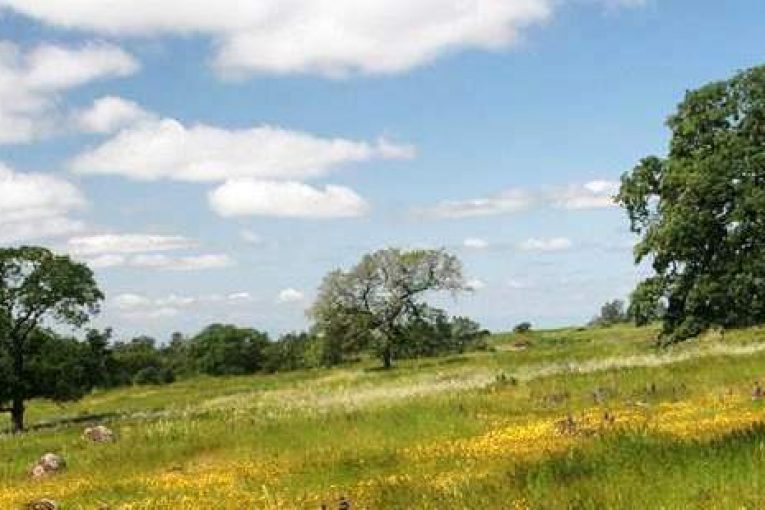

by Alan Pryor
Introduction – Every 2 years the Sierra Club Yolano Group prepares questionnaires for candidates in local races we deem to be seriously contested and/or where there are clear differences between the candidates on matters of interest to the public and/or our local Sierra Club members. We use questionnaires with written responses to allow the candidates to directly express their  views and opinions in their own words. We report these in a series of articles on a range of environmentally-related topics.
views and opinions in their own words. We report these in a series of articles on a range of environmentally-related topics.
This is Part 4 of the series in which we report candidates’ responses to a series of questions regarding transportation management in the City. The candidates responses are in alphabetical order based on their first name.
1st Question re: Bicycle Use
Preamable: Davis prides itself on being a bicycle-oriented city with miles of bike lanes and paths throughout the community to facilitate bike use as an alternative form of transportation. Yet, the bicycle mode-share in Davis has dropped in recent years.
Question: What would you propose to make the bicycle a more viable and safe transportation mode in Davis?
Colin Walsh 
Safe routes to school is a start, but there also needs to be education and advocacy for bicycle transportation for kids. I remember when I went to WDE, most kids rode their bikes alone, but now I see posts from parents fretting about letting their 4th graders bike alone to school. I also see that the bike rakes are the same size, even though the schools are often have more than twice as many kids. One major hurdle is the condition of many of our bike paths. If people are going to use the bike paths they need to be in a condition that facilitates their use. Bumpy and cracked paths are a hazard and a deterrent. As council members we can lead by example and showcase our use of using our bike for transportation around town and challenge our fellow citizens to join us. People also need to feel that when they lock up their bike at school or around town that it will not be stolen. A bike theft task force is needed as bikes are being stolen regularly, even when secured with expensive locks in visible locations.
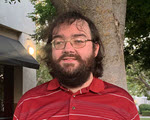 Connor Gorman
Connor Gorman
One thing that would make biking more viable and safe in Davis is to improve and expand upon bike infrastructure since even though Davis has a lot of it, there are still some places where bike paths don’t exist and there’s a lot of places where these paths are in bad condition. We should also evaluate the relative use of different paths and allow this information, in conjunction with data on the condition of different paths, to inform how we prioritize and schedule improvements. Another way to help increase the number and percentage of people using bikes for transportation in Davis is to decrease the distance between where people live and the places they tend to visit the most, like work, school, and businesses. This would mean, among other things, building more housing near downtown and the UC Davis campus.
Dillan Horton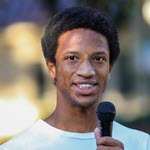
We simply need more bike spaces in Davis so that people feel like the system is actually set up for them to ride and keep their bike securely.
 Josh Chapman
Josh Chapman
I support all efforts to increase bike and pedestrian mode share in Davis and throughout the region. I’m a very strong supporter of alternative/non motor vehicle transportation options. I will work with fellow City Council members, County staff, City staff, community organizations, City commissions and other appropriate stakeholders to help encourage alternative modes of transportation encourage more viable and safe options for our community.
Larry Guenther 
Bike viability comes with safety and accessibility. I would like to see the speed limit downtown reduced to 15 mph. We also need to improve bike connectivity throughout Davis, e.g. Mace overcrossing, Olive/Richards intersection, Cantril Roundabout, Richards overcrossing, etc. I think a bicycle/pedestrian at-the-railroad-grade crossing on Olive Dr. across Richards would be a vast improvement for all modes of travel at the Olive/Richards intersection. This design was presented by Steve Greenfield and essentially puts the bike/ped crossing next to and at the level of the railroad tracks. It then circles around by the (almost unused) X-permit lot, and joins the existing bike/ped undercrossing on the West side of Richards into downtown. I am a proponent of under-crossings. The change in elevation, and therefore space, required for over-crossings is much greater than for under-crossings. This much-greater height difference from grade means that over-crossings become a barrier to bicycle use. In new large development projects, I would advocate making the initial design centered around bike/ped modes of travel, then layer transit on top of that. If we keep designing projects for the automobile as the predominant mode of travel, it always will be.
 Lucas Frerichs
Lucas Frerichs
Establishing regular bike usage starts when people are kids, and they develop early riding habits, that tend to stick for a lifetime. We need to ask DJUSD to fund the Safe Routes to School staff position 50/50. Increasing safety of riders is key, as is ease of usage. We need to continue to improve bike/ped infrastructure across town, including recently completed grade separated Cannery neighborhood connection, soon to be constructed Pole Line to Olive connector, the new grade separated bike/ped crossing adjacent to newly redesigned Richards Blvd overpass. And we also need to maintain existing bike/ped infrastructure, including the recently rebuilt North Davis greenbelt path, and soon to be reconstructed Russell bike path, among other improvements.
Kelsey Fortune 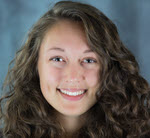
When considering funding for road and path improvements, bicycle infrastructure should come first. As I mentioned in the first question, I believe that financial incentives to discourage private vehicle infrastructure and private vehicle ownership is integral. Finally, building dense housing near places of work and play further encourages cycling over private vehicles.
 Rochelle Swanson
Rochelle Swanson
Before proposing new measures, I want a study that engages the community as to why bicycle ridership has dropped. Is it population change? People who are differently abled than those who use bicycles as their primary mode of transport? I do believe improving the surfaces of the current bike infrastructure would support current and increased ridership
Will Arnold 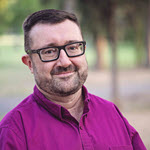
Making a serious commitment to repair and upgrade our transportation infrastructure is imperative. I am proud of the level of commitment we have made to repair and maintain our existing infrastructure. I am also proud of the new pieces of bike/ped infrastructure we have approved and/or built since I have been on the Council, including the Cannery bike connection and improvements to the Covell overpass, the Olive Drive bike connection, and the grade-separated bike route across Richards which will accompany that project. .
2nd Question re: Downtown Parking Structure
Question: Do you support the construction of a new automobile parking structure near or in the downtown core and why or why not? If yes, where would you like to see it located, how large should it be, and how should it be paid for?
 Colin Walsh
Colin Walsh
We need to explore other ways to facilitate travel to downtown, such as “electric rickshaws,” more extensive bus service, better bicycle throughways and more secure bicycle parking. I think every effort needs to be made to reduce car trips to downtown while increasing the number of people and frequency of trips downtown. I would like to see increased ridership on the Amtrak train or other rail. I see getting people out of their cars and off of interstate 80 as a very positive goal. Providing additional parking for train riders could help move that goal forward. I hope to see parking structures as a thing of the past – especially sloped parking structures that have no possibility of repurposing. If funding and land were available, I would consider a land use efficient parking structure that could service the train station and the downtown. It would be preferable to access such a structure from Olive drive, and the site of Lincoln 40 would have been a good choice.
Connor Gorman 
No since we already have a few parking structures in or near the downtown that don’t seem to fill up that often. We need to incentivize other modes of transportation (like walking, biking, and mass transit) but even without such incentives, I doubt a new parking structure would have much of an impact on the parking and traffic issues downtown.
 Dillan Horton
Dillan Horton
I believe as the city tries to address current concerns about access to downtown due to lack of parking the city should consider the efficient expansion of parking, possibly in a new structure. This is obviously a path riddled with pitfalls. Structures provide lots of spaces in a comparatively smaller footprint to a parking lot, but they are expensive. Additionally there are concerns about usage of the current city parking structures/lots. In the long run the city needs to open up access to downtown, this is one discussed solution but by no means the only one.
Josh Chapman 
No. It is financially infeasible. With ride share and bike share options continuing to be more popular we do not need a parking structure downtown and should be encouraging and incentivizing alternative modes of transportation. With the current pandemic hammering our downtown the time for a parking structure has come and gone.
 Larry Guenther
Larry Guenther
No. I would like to improve the existing parking infrastructure first. 1. Re-vamping the X permit system to be more efficacious at getting employees to park outside or at the perimeter of downtown. Pre-pandemic, our parking problem was for several hours a few days a week. 2. The most recent traffic study of downtown showed that downtown employees take up 15% of the on-street parking during peak use. Reduce that to 5% and our parking problem is largely solved. 3. Work with downtown banks to reduce branch size and possibly partner with the City to allow use of their lots by people other than only their customers. 4. Building a parking garage is a community-paid infrastructure project. They cannot be made to pay for themselves and it relieves the pressure to use other modes of transportation. We need to stop using the automobile as the central concern of our land-use planning.
Lucas Frerichs 
No. I don’t support the construction of a new parking structure near/in downtown core. The two existing parking structures are utilized, and 4th & G needs improved utilization. While on the city council, I voted to approve electronic/dynamic signage that tells how many spaces are open/available at various surface lots and structures- and most of that signage is in place and operating. Now, with the COVID pandemic, there is a need for reclaiming additional outdoor space for dining, etc, and the city co-sponsored/DDBA co-sponsored OpenAirDavis program downtown is an example of taking some street parking and making it more usable for pedestrians/patrons of downtown businesses.
 Kelsey Fortune
Kelsey Fortune
I am not in support of allocating additional prime real estate to vehicles. Downtown businesses pay high rent, and yet we continue to allocate space to vehicles for free. Increased parking will only encourage people further to drive to downtown rather than using alternative transportation. The only situation in which I would support a new parking structure is if it is paired with the removal of private vehicles and parking from some downtown streets to provide more space for businesses, cyclists, and pedestrians.
Rochelle Swanson 
I would support a multi-mode parking structure (auto, bike, scooter, etc.) if incorporated into a mixed use development that would also support ridership of Amtrak, Yolobus and other alternative transportation.
 Will Arnold
Will Arnold
One of the 19 Parking Task Force recommendation was to increase the overall supply of parking downtown. I believe current demand, combined with significant growth of UC Davis student enrollment, and our express desire for Downtown Davis to be a destination for out-of-town visitors and shoppers, make this an attractive proposition. But parking garages are exceedingly expensive and, absent outside funding, not something the City can afford on its own. I am encouraged by recent efforts to explore funding for a garage on the Amtrak lot, but the result of that process is many years away.
3rd Question re: Parking Meters
Question: Do you support the addition of parking meters on downtown streets or in downtown city-owned public parking lots or parking structures and why or why not?
Colin Walsh 
I think there are many places in Davis that paid parking should be implemented. I would like to see exit fees on garages like at the new Sterling apartments, Lincoln 40 and University Commons projects to encourage the use of other forms of transportation. The City’s downtown parking plan included several items to help reduce car travel to the downtown, such as improved public transportation. After lengthy discussions with local business owners, despite my initial desire for paid parking downtown, I have come to understand their concerns that paid parking may discourage customers from coming downtown at all or shortening their visits. The stores in our downtown often work on thin margins and even a small decrease in customers could make the difference between profitability and closure. I believe keeping as vibrant downtown as possible will attract people to the Davis downtown and discourage travel further distances to other towns, keeping GHG emissions down. Inversely, if we lose our Downtown businesses people will be forced to travel further to stores and entertainment and will be far more likely to drive. The plight of our downtown businesses has only increased through the pandemic. Therefore, I oppose increased paid parking in the downtown at this time, but would consider it in the future as other parts of the parking recommendation are implemented and downtown business become less car dependent.
 Connor Gorman
Connor Gorman
No. Despite this type of paid parking having some benefits, many downtown businesses are against it and to me this is also an equity issue since people who have to drive downtown due to accessibility needs or needing to commute because they can’t afford to live near the downtown shouldn’t have additional charges imposed on them. Instead, we should work to create more positive (rather than negative) incentivizes to use other modes of transportation (like walking, biking, and mass transit) when traveling to, or within, the downtown.
 Dillan Horton
Dillan Horton
No I don’t support additional parking meters downtown. As mentioned in the previous answer, the issue is availability of parking. Meters don’t increase the availability of spaces and naturally reduce accessibility to the areas they’re installed into.
Josh Chapman 
Absolutely, the Downtown Parking Taskforce recommendations should’ve been implanted as a whole and not broken apart as they were. Parking meters are the main part of a successful comprehensive downtown parking plan.
 Larry Guenther
Larry Guenther
I am not opposed to them, but I think there is more that we can do before we implement them. I support what works. The E St. Plaza user-paid parking works. It is full at almost all times. The user-paid G St. parking structure doesn’t work. It is very underutilized at almost all times. Clearly it is not as simple as user-paid vs. community-paid parking. We keep designing things for people without designing things around people. Said another way, our project designs are created by engineers and architects without engaging sociologists or psychologists. If we want people to use things, they need to be designed around people. The motivation for user-paid, on-street parking is that expense controls behavior. If we believe that paradigm (and I do), the recent decision (shelved since the onset of the Pandemic) to put meters in lots and no meters on streets will push people to use on-street parking and forego lot parking, which is exactly what we don’t want. As stated above, there are several ways we can improve our parking situation without adding meters. When meters will help solve our parking problems, I will vote for them. I believe in evidence-based decision making.
Lucas Frerichs 
I voted to turn several of the downtown surface parking lots into paid parking lots. (I’m not excited about individual parking meters as I think they clutter the limited sidewalk space) I voted for some increased paid parking lots, primarily because paid parking is a proven parking management tool.
 Kelsey Fortune
Kelsey Fortune
I believe that implementing a price on parking is a great solution to discourage driving and create a new funding stream for the city. However, it is politically unpopular and not my first choice to reduce congestion and VMT. As mentioned earlier, I would first discourage vehicle ownership through a parking space fee for multifamily and commercial complexes, which I believe would have a similar impact on parking in the downtown core as meters and also provide a funding stream for the city.
 Rochelle Swanson
Rochelle Swanson
I have support metered parking on downtown streets where there is a validation program for customers and extended minimum parking times.
 Will Arnold
Will Arnold
Another Parking Task Force recommendation was the installation of parking meters. This is a very costly and character-altering proposal. Their significant initial expense is only recoverable by their continued use, meaning they will be a permanent fixture of our downtown. In other words, once parking meters are here, they’re here to stay. For this reason, I believe a prudent approach is to exhaust other parking-related efforts, as well as allowing the Downtown Plan to be finalized, prior to making this permanent and costly change to our downtown.
Support our work – to become a sustaining at $5 – $10- $25 per month hit the link:






Way to go Connor Gorman.
Rochelle, the validation program you have been talking about for years turned out to be paid for by the businesses on a voluntary participation business in the last proposal. I thought you were for supporting business. As one downtown property owner, who has studied it told me told me, he has never seen a public validation system that worked.
Josh Chapman and Kelsey Fortune, forgetaboutit.
Lucas, Larry is right about meters in lots forcing street parking congestion.
Larry, how do you incentivize getting employees and business owners to park farther away? Its simple, you subsidize it.
District 2 answers are all reasonable. Colin mentions improving bus transport into downtown. This is particularly useful for people living on the west side of town where all bus rides into downtown require a trip through the University and a transfer.
What I found interesting was that while many candidates talked about economic disincentives few talked about economic incentives to move people in and out of downtowns without cars. This is what is wrong with the general approach to governance of so many of our candidates, too many sticks and very few carrots. Our CC members are supposed to serve the community. It seems too many want to regulate it instead.
Ron G
Where are you going to get the funds for incentives? The obvious answer is the other direction. Those driving downtown are consuming street space (which now has become even more valuable with the outdoor dining venues that I hope continue post-pandemic.) They should pay for using that space–that’s the way that markets work when we can clearly define the property rights for that space. (And a community can collectively hold a property right.)
Those are already public spaces the only cost is maintenance which should be covered by the tax generated from sales to people who park downtown. The problem for putting meters in is that the margins are too thin with most of the money going to the meter industry. So when you do a cost benefit analysis of meters there is little net benefit to the city.
I agree that we should continue with outdoor dining. Before the pandemic Burgers and Brew used parking spaces on Third St. for seating. I don’t know if they paid rent for the spaces or if it penciled out solely on the basis of sales tax revenue. Either way I don’t have an objection to that policy but I do know some of the merchants were opposed pre-pandemic.
Still you raise an important point about getting money to fund incentives. Therein lies the problem. The X permit program is a good example. By charging for an X permit the city creates disincentives for lower wage employees to not park in an X lot. So the City won’t solve its parking problem with incentives because it doesn’t have enough money and wants to monetize parking as a revenue source. Even when the great parking meter debate raged a while back the city never proposed reducing or eliminating X permit costs for low wage workers. This has always been about Davis’ lack of economic development and rent seeking from the community. The sad part is that for it to pencil out the rates would be quite high. The initial charge was up to $2/ hour. You can imagine it going up from there. That is why the city tried to put metering in 12 hours a day, seven days a week, when the Parking Task Force recommended 10 hours a day, 6 days a week.
Another example, if it wasn’t about rent seeking and was truly about getting people in and out of downtown without bringing cars the city would put a bus hub at the train depot and would work with Unitrans to provide direct routes into downtown from West Davis. Yet no such proposal has been pursued.
Even after Sacramento reorganized its entire and much bigger bus system to make it more efficient and convenient for users Davis has done nothing.
I have a question for all the candidates. CC members are given a permit that exempts them from parking regulations. To me this seems hypocritical. Would you lead by example by refusing to accept a parking regulation exemption permit?
That is because the population is aging. In the absence of new homes that attract young families, that trend will continue.
Young families are probably the cohort/group that drive the most.
Seniors drive the least.
In addition, adding families won’t change the habits of existing residents.
Since Davis is on track to destroy its downtown as a commercial destination, none of this will matter much anyway.
In a larger sense, people are going to drive. Bicycles will never replace driving, especially in valley towns like Davis.
Before we plunge off into fighting the last war over transportation management, we need to reevaluate what might happen with the changes wrought by the pandemic. There’s a very strong possibility that commercial space may lay vacant for some time for various reasons. We need to assess the vulnerabilities that we face for different choices. For example, what if a new parking structure remains vacant? How do we pay for that? We may not have a downtown parking “problem” for some time.
BTW, the solution to removing downtown/owner parking from downtown is pretty straightforward: each day compile a license plate database from the parking officer routes and anyone car that is downtown for more than 2 hours gets an fine. This is a relatively simple solution that is easily handled by current technology. This would prevent the current strategy of moving one’s car through out the day.
More stick less carrot. Just try that. Instead of people moving cars every hour or two put up signs that say two hour limit for having your car parked downtown on any given day. It might sound good in theory but its likely to go nowhere with the public.
I’ll tell you I didn’t have a parking problem before the pandemic and, God willing, I don’t expect to have one after. It was the City that had a revenue problem. That is why they went with the stupid idea of putting meters in lots but not on street faces. It was all they could get through an opposed public and they are so desperate for revenue that they were willing to do something totally stupid even though the margins are thin and it would increase people circling downtown while they try to game the system. So much for fighting global warming.
Here is what the draft Downtown Davis Specific Plan has to say under Implementation Actions re: parking etc.:
“In the short term (0 to 5 years), set either curb parking time limits or prices to ensure curb parking is well-used but readily available. In the medium to long-term (5+ years), set performance-based prices for curb parking. ”
A bad idea that will never die. Its amazing to me that Davis wants to make people stay away from downtown.
Ron: I have to wonder if you actually use the downtown during peak hours. In the pre-covid world, I would get tons of texts from people – that they are looking for parking.
I would go downtown in the morning and it wouldn’t get crowded until 11:30 and then would thin out after 1:30. It would get crowded again towards dinner but it was almost never too inconvenient to find a spot. Of course when UC wasn’t in regular session, 19 weeks a year, the problems were even less acute.The point here is that the window when it was crowded was too small to warrant even a 1o hour/day six day a week metering protocol let alone a 12 hour/ 7 day a week program that can only be rationalized on the basis of rent seeking from the community.